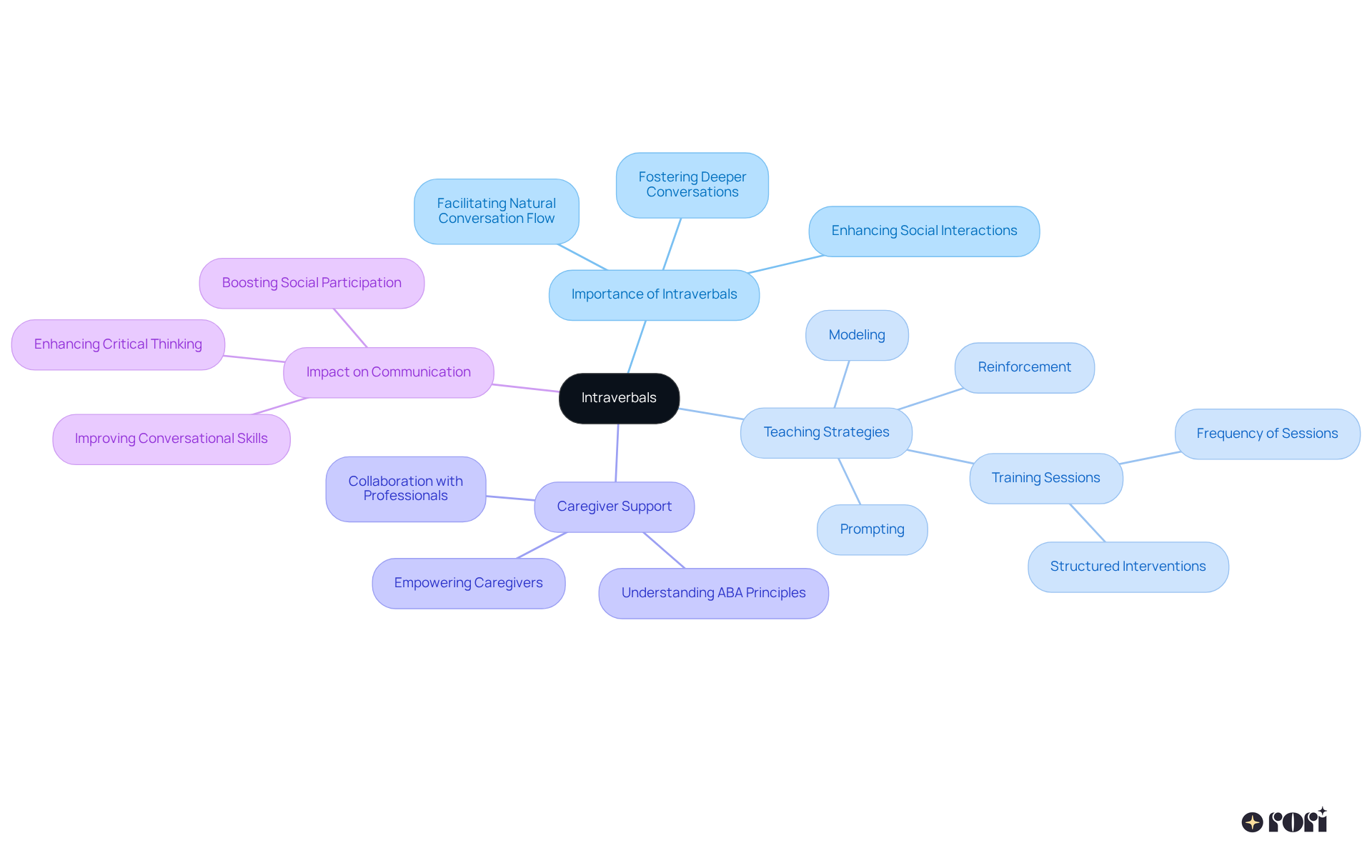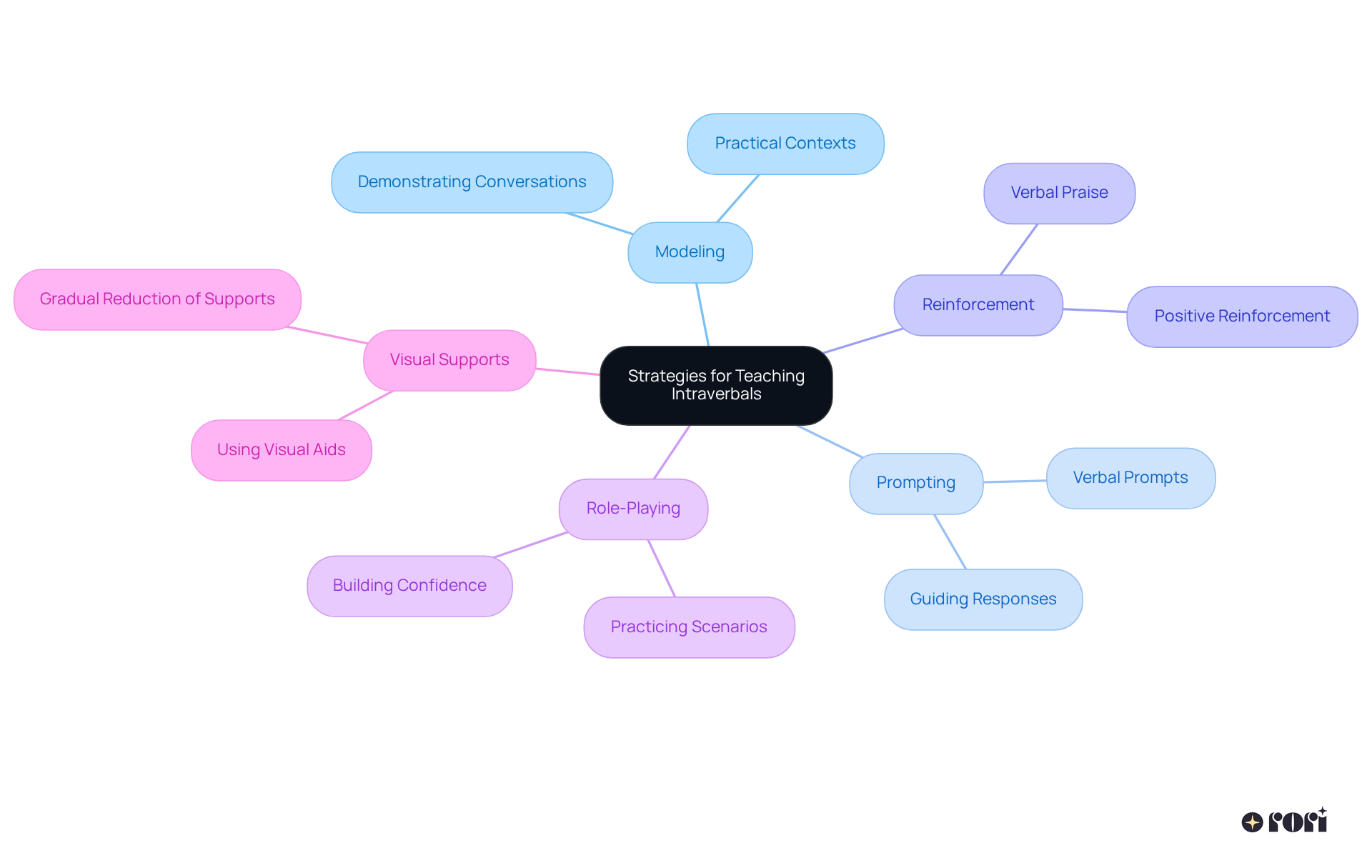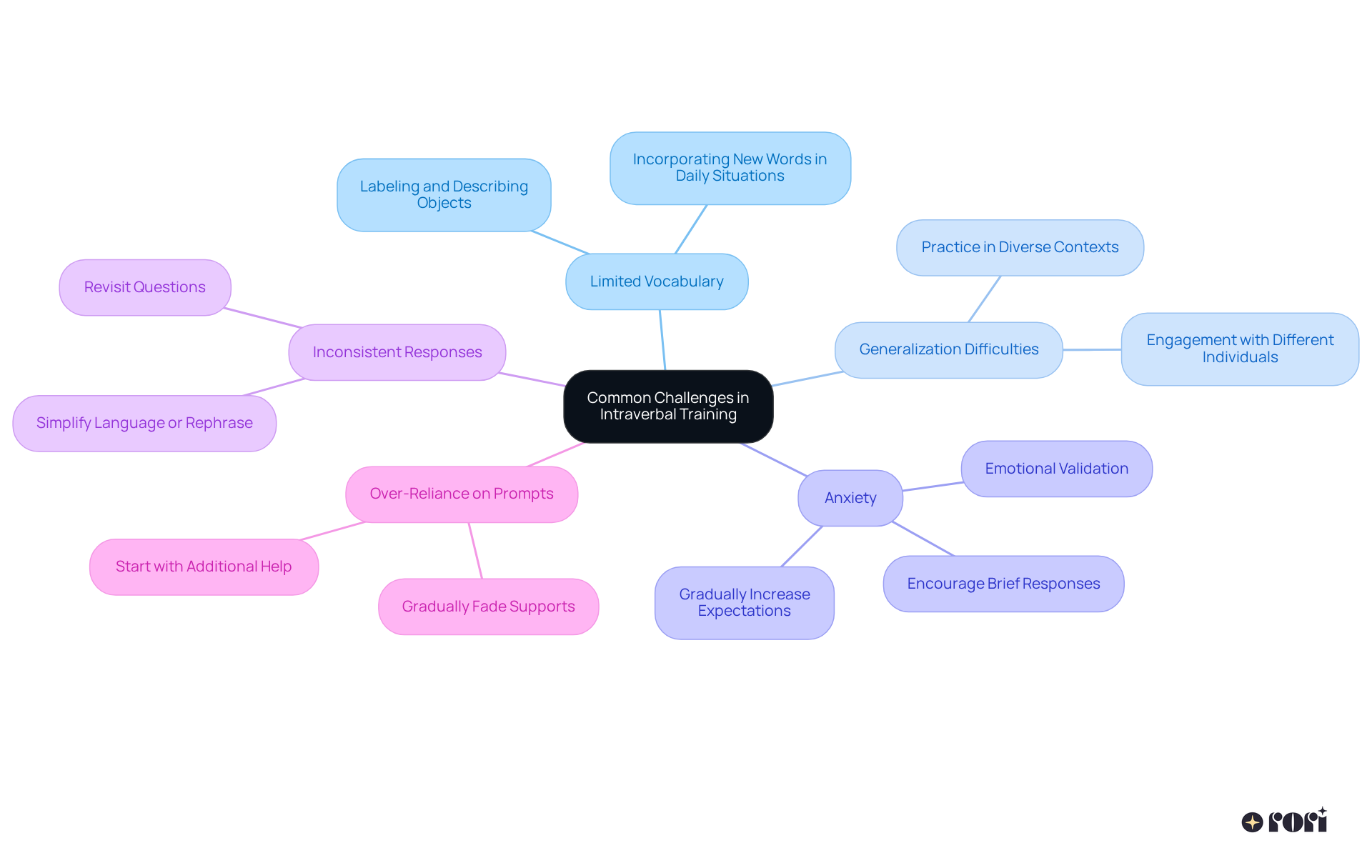This article takes a closer look at intraverbals and shares some key teaching strategies to help enhance their use, especially for individuals with autism. It highlights how effective methods like modeling, prompting, and reinforcement can make a real difference in improving communication and social skills. By doing so, we can help young people build deeper connections and interactions in various settings. Let’s explore this together!
Understanding the nuances of communication is essential, especially when it comes to fostering meaningful interactions among young individuals. 🌟 Intraverbals, which involve responding to verbal prompts without visual cues, play a pivotal role in enhancing social engagement and conversation skills, particularly for children with autism. This article delves into effective strategies for teaching intraverbals. We’ll explore how caregivers and educators can cultivate these vital skills to promote better communication and social integration.
But what challenges might arise in this journey? 🤔 And how can they be overcome to ensure success in developing these essential verbal interactions? Let’s explore this together!
Intraverbals are such an important part of how we communicate! They involve responding to someone else’s words without needing to see anything or get a physical nudge. This kind of interaction is essential for having meaningful conversations. Think about it: when someone asks, 'What do you like to eat?' and a young person replies with 'Pizza,' that’s a perfect example of an intraverbal exchange.
For our youth, especially those with autism, the role of intraverbals is huge. They help foster deeper conversations and improve social interactions, allowing young people to feel more connected to their world. With effective teaching strategies like prompting, modeling, and reinforcement, we can really enhance these skills, leading to better communication and social engagement.
At Rori Care, our clinical leadership team truly believes in the power of neurodiversity. We know that equipping caregivers with ABA principles is vital for supporting the behavioral goals of young individuals. When caregivers understand how verbal interactions work, they can make choices that positively impact their children’s growth. Research shows that regular training sessions—three to four times a week—can significantly boost conversational skills. For example, a case study that aims to define intraverbal tasks illustrates how targeted verbal activities can enhance critical thinking and comprehension in young people with developmental differences.
By nurturing these abilities, educators, therapists, and parents can create a supportive environment that encourages effective communication and social inclusion. This ultimately enriches the lives of young individuals and their families. Collaboration among all of us is key to developing effective interventions that cater to each child’s unique needs. Let’s explore this journey together and support our children every step of the way!

In Applied Behavior Analysis (ABA) therapy, it is crucial to define intraverbal interactions. They help individuals engage in meaningful conversations and social interactions. By nurturing these intraverbal skills, youngsters can respond appropriately to questions, share their thoughts, and join in conversations—essential for building connections and social competence.
In social skills group therapy, led by trained therapists, these interactions are further enhanced, leading to better communication and relationships among peers. Plus, when kids can express their needs and feelings verbally, it promotes their autonomy and self-advocacy. Isn’t that wonderful?
Caregiver education plays a vital role too! It equips parents with the tools they need to support their children’s development effectively. In essence, to define intraverbal is to understand that mastering verbal responses is a stepping stone toward achieving effective communication and social integration for individuals with autism.
Ready to take the first step toward a brighter future for your child? Let’s explore this together! Sign up for a free consultation to create a personalized developmental plan with our compassionate team of experts.
To effectively teach intraverbals within the framework of Applied Behavior Analysis (ABA)—a therapy that adapts to individual needs by utilizing the science of learning and behavior—let's consider some friendly strategies:
Modeling: Imagine demonstrating how to define intraverbal exchanges in everyday settings. For instance, during a meal, you might ask, 'What do you want to drink?' and encourage your little one to respond. This not only illustrates how conversations flow but also sets a practical context for learning, perfectly aligning with ABA’s focus on personalized support.
Prompting: Think about using verbal prompts to guide responses. If your child struggles to answer, you could say, 'What do we eat for breakfast?' This technique helps elicit responses and strengthens the connection between questions and answers, nurturing their communication skills. Effective prompting can really elevate your child’s ability to engage in conversations, which is essential to define intraverbal communication, a core principle of ABA.
Reinforcement: Providing positive reinforcement for correct responses is key. A little verbal praise or small rewards can significantly boost the likelihood of desired behaviors, encouraging your child to participate more actively in conversations. Positive reinforcement is a fundamental aspect of ABA therapy, leading to better communication outcomes and supporting your child’s behavioral goals.
Role-Playing: How about creating scenarios where your child can practice to define intraverbal in a safe environment? Role-playing various social situations allows them to practice responses, increasing their comfort and confidence in real-life interactions. This approach not only strengthens the bond between you and your child but also enhances their interaction skills, allowing you to actively engage in their growth.
Visual Supports: While intraverbals don’t rely on visual cues, using visual aids can initially help young learners grasp context and improve their responses. Gradually reducing these supports as they gain proficiency ensures that your child develops independence in their communication abilities. Using visual aids and flashcards has been shown to enhance language skills for young ones with behavioral challenges, empowering caregivers to make informed decisions.
By weaving these approaches into everyday conversations, you can create a vibrant atmosphere that nurtures the development of intraverbal skills, ultimately helping to define intraverbal abilities in your child’s conversational talents and social exchanges. Plus, interactive techniques like songs and rhymes are fantastic resources for language development! Let’s explore this together and equip ourselves with the understanding and skills needed to support our children’s advancement.

Instructing verbal interactions can present various challenges, and as parents, you might face a few bumps along the way. Let’s explore some common issues and effective strategies to tackle them together!
Limited Vocabulary: If your child has a limited vocabulary, don’t worry! They can benefit from expanding their word bank by consistently labeling and describing objects in their surroundings. By incorporating new words into everyday situations, you can enhance their retention and understanding.
Generalization Difficulties: It’s not uncommon for children to shine in one environment but struggle in another. To help them generalize their skills, practice to define intraverbal across diverse contexts and with different individuals. This reinforces their ability to apply what they’ve learned in various settings.
Anxiety: Anxiety can sometimes hold a young person back from speaking up. To foster a supportive environment, encourage brief responses at first and gradually increase your expectations as their confidence grows. Remember, emotional validation during these moments is crucial for creating a sense of safety.
Inconsistent Responses: If you notice inconsistencies in their answers, it might indicate a misunderstanding of the prompts. Take a moment to revisit the questions, simplifying the language or rephrasing as needed to enhance clarity and comprehension.
Over-Reliance on Prompts: If your child seems overly reliant on prompts, it’s important to gradually fade these supports. Start with additional help and slowly lessen it as they gain comfort and independence in their responses.
By proactively addressing these challenges with targeted strategies, you can cultivate a more effective learning environment for defining intraverbal skills. This, in turn, enhances communication and social interaction for children with autism. Rori Care is here to support families on this journey, offering services like caregiver education and individual therapy. Let’s explore this together!

Intraverbals are so important for improving communication and social interactions, especially for young individuals with autism. When caregivers and educators understand and teach these skills effectively, they can really boost children's conversational abilities. This not only helps kids connect more deeply with others but also supports their overall development.
In this article, we’ve highlighted some key strategies like:
These methods not only make learning easier but also create a warm environment that encourages children to dive into meaningful conversations. Plus, it’s crucial to tackle common challenges like limited vocabulary and anxiety so that kids can use their skills in different situations.
Ultimately, teaching intraverbals is a vital journey for helping young individuals communicate effectively and feel included. By embracing these strategies and working together with caregivers, educators, and therapists, we can help shape a brighter future for children with developmental differences. Committing to understanding and implementing intraverbal skills enriches their lives and opens doors for success in social interactions and personal growth. So, let’s explore this together and make a real difference in their lives!
What are intraverbals?
Intraverbals are responses to someone else's words that do not require visual cues or physical prompts. They are essential for meaningful conversations.
Why are intraverbals important for youth, particularly those with autism?
Intraverbals help foster deeper conversations and improve social interactions, allowing young people, especially those with autism, to feel more connected to their environment.
What teaching strategies can enhance intraverbal skills?
Effective teaching strategies include prompting, modeling, and reinforcement, which can lead to better communication and social engagement.
How does Rori Care support the development of intraverbal skills?
Rori Care emphasizes the importance of neurodiversity and equips caregivers with ABA principles to support the behavioral goals of young individuals, enhancing their verbal interactions.
What does research indicate about training sessions for improving conversational skills?
Research shows that regular training sessions—three to four times a week—can significantly boost conversational skills in young individuals.
How can targeted verbal activities impact young people with developmental differences?
Targeted verbal activities can enhance critical thinking and comprehension, improving overall communication skills in young people with developmental differences.
What role do educators, therapists, and parents play in supporting intraverbal development?
They can create a supportive environment that encourages effective communication and social inclusion, ultimately enriching the lives of young individuals and their families.
What is the significance of collaboration in developing interventions for children?
Collaboration among educators, therapists, and parents is key to creating effective interventions that cater to each child's unique needs.